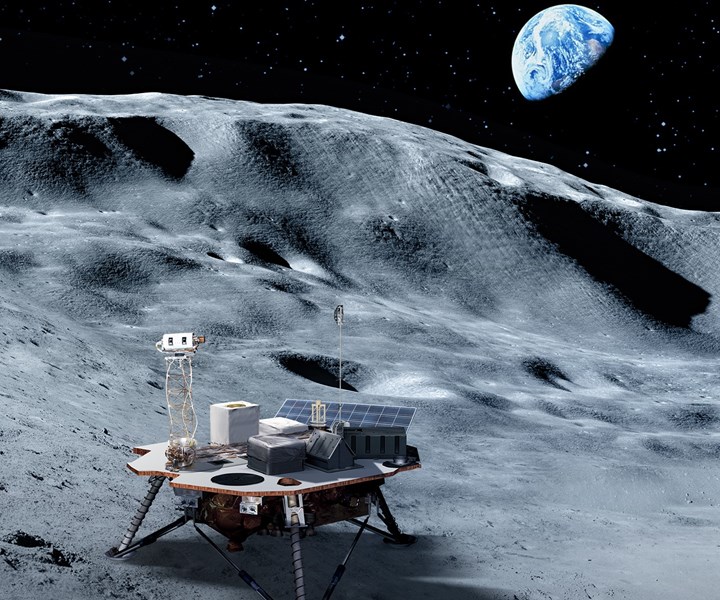NASA seeks companies to participate in next phase of commercial lunar payload services
NASA announcement calls for companies to participate in development of technologies to support the next generation of lunar landers.

Source | NASA
NASA (Washington, D.C., U.S.) has announced the latest opportunity for industry to participate in its Commercial Lunar Payload Services (CLPS) efforts to deliver science and technology payloads to and near the Moon.
The newest announcement calls for companies to participate in development of technologies to support the next generation of lunar landers that can land heavier payloads on the surface of the Moon, including the South Pole, as part of the agency’s Artemis program, which aims to return humans to the Moon by 2024.
NASA anticipates the need for both small and mid-size lunar landers to enable a variety of science investigations and larger technology demonstration payloads. Future payloads could include rovers, power sources, science experiments and technology to be infused into the Artemis program.
“As we enable broader opportunities for commercial providers through CLPS, we’re enlarging our capabilities to do novel measurements and technology development scientists have long wanted to do at the Moon,” says Thomas Zurbuchen, NASA’s associate administrator for the agency’s Science Mission Directorate.
Companies selected under this call will work to provide services to the lunar surface to support NASA exploration priorities and use the Moon as a proving ground for systems and technologies that will enable humans to explore Mars. Selected companies are able to compete for delivery task orders. CLPS providers already contracted for the project include:
- Astrobotic Technology (Pittsburg, Pa., U.S.)
- Deep Space Systems (Littleton, Colo., U.S.)
- Draper (Spiceland, Ind., U.S.)
- Firefly Aerospace (Cedar Park, Texas, U.S.)
- Intuitive Machines (Houston, Texas, U.S.)
- Lockheed Martin Space (Denver, Colo., U.S.)
- Masten Space Systems (Mojave, Calif., U.S.)
- Moon Express (Cape Canaveral, Fla., U.S.)
- Orbit Beyond (Edison, N.J., U.S.)
“The Artemis program integrates our science and human exploration goals, and we are using our commercial partners to help meet those goals with an innovative and cost-effective approach,” says Steven Clarke, NASA deputy associate administrator for exploration in science. “The capability to land heavier payloads on the lunar surface is a service that NASA has a keen interest in. We’re looking forward to innovative proposals and possibly more partners to advance what we’ve already started with CLPS.”
The CLPS contracts are indefinite-delivery, indefinite-quantity contracts with a combined maximum contract value of $2.6 billion with performance through 2028.
Related Content
-
Plant tour: Spirit AeroSystems, Belfast, Northern Ireland, U.K.
Purpose-built facility employs resin transfer infusion (RTI) and assembly technology to manufacture today’s composite A220 wings, and prepares for future new programs and production ramp-ups.
-
Infinite Composites: Type V tanks for space, hydrogen, automotive and more
After a decade of proving its linerless, weight-saving composite tanks with NASA and more than 30 aerospace companies, this CryoSphere pioneer is scaling for growth in commercial space and sustainable transportation on Earth.
-
ASCEND program update: Designing next-gen, high-rate auto and aerospace composites
GKN Aerospace, McLaren Automotive and U.K.-based partners share goals and progress aiming at high-rate, Industry 4.0-enabled, sustainable materials and processes.
















